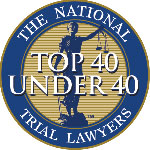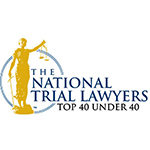In California civil cases involving employee-employer disputes, evidence plays a crucial role in substantiating claims and determining the outcome of the case. Evidence in such cases can generally be categorized into three main types: circumstantial evidence, documentary evidence, and testimony.
Circumstantial evidence refers to indirect evidence that implies a fact or event without directly proving it. This type of evidence may include patterns of behavior, timing of events, or other circumstances that suggest a particular conclusion. In employment cases, circumstantial evidence could involve recurring instances of discriminatory treatment, patterns of retaliation, or discrepancies in treatment among employees.
Documentary evidence consists of written or recorded materials that are submitted to the court as evidence. This includes employment contracts, personnel records, emails, memos, policies and procedures manuals, performance evaluations, and any other documents relevant to the case. Documentary evidence is often crucial in proving the terms of employment, the occurrence of specific events, or the existence of discriminatory practices.
Testimony involves the statements made by witnesses under oath during court proceedings. Witnesses may include the parties involved, coworkers, supervisors, human resources personnel, or other individuals with relevant knowledge of the events in question. Witness testimony provides firsthand accounts of the incidents or practices alleged in the case and can help corroborate other forms of evidence.
In legal matters, obtaining evidence isn’t your responsibility—it’s your attorney’s job. As you navigate through your case, trust that your attorney will take charge of gathering the necessary evidence to support your claims.
What Types of Evidence Can Help in California Employment Law Cases?
You are preparing to sue your employer for misconduct. Perhaps you were subject to an unsafe work environment, wage theft, workplace discrimination, or overt harassment. Whether you are fighting an ingrained system of unfair policies or a single person who has made your working life a nightmare, you have a right to stand up in court and hold your employer accountable.
The first step in building a successful employment law case is to gather evidence. To prove that your employer is in the wrong, you need records of their wrongdoing. The good news is that modern workplaces create a copious amount of evidence through written documents, digital communication, published policies, and a paper trail of almost every decision. There are also ways to collect unwritten evidence on your own or with the help of your lawyer.
At Eldessouky Law, we have handled many California employment law cases and can help you identify the best types of evidence for employment law cases to prove the unlawful activities of your employer.
1. Your Job Description and Contract
Start with your job contract and the initial job description. Your contract defines the duties associated with your job and the compensation you have been legally guaranteed in return for that work. If you have been asked to perform duties outside of your job description or are not being compensated in accordance with your contract, this document is essential.
2. The Employee Handbook
The employee handbook (and other work policy documents) can be very useful in two different types of situation
1) The employer is violating their own handbook with unfair or unequal policy implementation. Perhaps they are not obeying the established standards of raises and promotions, are not responding to reported problems with the appropriate procedure, or are not adhering to established safety standards.
2) The employer’s policies are inherently biased or unlawful. Perhaps their time clock rules violate the California law on paying for all employer-controlled time or the promotion and bonus standards clearly evidence a type of prejudicial decision making.
3. Personal Communication Records
If you have received messages that prove wrongdoing, keep a record of them separate from your work accounts. Save emails, chat logs, text messages, and other forms of communication. Examples of wrongful communication include
- Hostility, insults, and bullying
- Sexually explicit words, requests, or content
- Requests to perform illegal actions, like falsify documents or hide money
- Relentless communications outside of work hours
- Micro-managing that defies your exempt status
- Threats of any kind
4. Records of Complaints, Issue Reports, and Requests
It is very important for most employment law cases that complaints and requests are made before a lawsuit is filed. Employers need to be aware of a problem and fail to take action – or take the wrong actions – to be held liable.
Therefore, if you (or a coworker) makes a complaint, keep a copy and whatever records you can collect that the complaint was submitted. Make sure it is done in writing so your employer can’t deny whether a private conversation occurred.
5. Public Announcements and Policy Updates
Sometimes, employers incriminate themselves through public announcements and policies. Sudden changes in policy often reflect either bias or retaliation that has recently become relevant.
Examples:
- An announcement that head coverings and hats are banned after hiring an employee who wears a cultural head covering
- A policy update that any employees with a strong accent will be sent to work in non-customer-facing positions
- A policy update that a particular team or person that lodged a complaint will be ineligible for yearly bonuses
- An update to the leave policy to disadvantage parents after an employee announces their pregnancy
You may also find evidence of past announcements that prove bias or retaliatory decision-making.
6. Safety Inspection and Compliance Audit Reports
Reports can be very useful evidence in an employment law case. There are many types of reports, from historic financial records to disciplinary reports. Among the most useful are the results of safety inspections and compliance audits. In some cases, the lack of such reports is more suspicious than the reports themselves.
Professional expert testimony from auditors and inspectors can also be extremely useful.
7. Personal Work Hours Records and Official Pay Records
If the issue is a matter of pay, there are several types of records that can serve as powerful evidence. This includes both the company’s official records and your own personal records.
Personal Work Hour Records: If an employer has been underpaying you, keeping personal records of your work hours can be used against their payroll records to show inconsistency in hours and/or underpaid overtime hours.
Pay Stubs or Transaction History: An irrefutable record of how much you have been paid over time. This can show discrepancies, inconsistencies, or a sudden cut in pay or denial of bonuses
The Time Sheet: A photo or digital record of the employer’s time sheet and how it is kept
Comparative Pay Records: A comparison of pay records between you and colleagues to prove inequality or other suspicious pay-related activity.
8. Screenshots and Photographs
Sometimes, employers or coworkers think they can get away with things because the evidence won’t last. Chat records that expire, unrecorded video meetings, whiteboard drawings that are erased, and so on give abusers a false sense of security.
You can still collect evidence of these behaviors with screenshots and photographs. Use your phone to snap photos of documents you don’t get to keep, visuals that will be erased, or flyers that will be removed.
Use the screenshot buttons on your keyboard or phone to capture digital images and records that cannot be saved or will expire and disappear.
9. Recordings of Public Conversations
If your harasser tries to use in-person conversations to say terrible things “off the record”, there are ways to record their statements that can be used as evidence in court.
California is a two-party state when it comes to recordings with sound – audio or video. This means all parties recorded must give consent for the recording to be used. However, this only applies to private settings like closed offices, restrooms, locker rooms, and residences where privacy can be assumed. Most workplace environments, however, are public.
Open-plan office spaces where multiple people work, lobbies, parking lots, commissaries, and break rooms are all public spaces. You can use your phone to record conversations or video with sound in these areas, and it will likely be accepted as evidence. Because of this, harassers are not as safe as they think they are.
10. Soundless Video of Behaviors
The two-party recording law also only applies to recordings of audio. If you are recording behaviors, like pushing, personal space invasion, harmful “pranks”, visible shouting, and other harassing activities, you can record without sound.
It is also possible to record virtual meetings (which are private) soundlessly with captions turned on. Or you can present virtual meeting recordings, taken as personal work product, with the sound removed to show behaviors without words.
11. Your History of Performance Reviews
In cases where you are seeking to prove work-related health impact or retaliation, your history of performance reviews may be helpful evidence.
If you are making a point about your health, a drop in performance or attitude might reflect stress, depression, or the worsening of a medical condition that affected your job performance.
If you are proving retaliation, your performance reviews may reflect a sudden and spurious spike in negative comments and ratings that are not backed by your actual performance.
12. Comparative Evidence
In many workplace discrimination cases, comparative evidence is useful. IYou may be able to offer the same data from several coworkers and prove a pattern of discrimination in how they are treated. Coworkers who are equally upset by the actions of your employer may be willing to share information like their pay rate, promotion consideration, access to bonuses, vacation approval, and so on to prove that one manager or the entire organization is making unfair decisions that affect everyone.
13. A Personal Journal of Events
In situations where it is difficult to collect proof, you can still create a record of what is done to you in the form of a journal. A consistent and carefully kept journal of abusive behaviors or policies will be taken into consideration as evidence, and can be used to create a timeline for any other evidence that may be available.
For example, if you are being harassed constantly in private or in offhand comments where you cannot record, and if decisions that disadvantage you are never written down, keeping a journal record of each incident can be considered evidence.
14. Witness Statements
Witness statements have always been considered very strong evidence. If you have coworkers willing to share their side of the story, this will ben strongly considered in evidence in an employment law case.
In fact, you can even ask clients, customers, or vendors who may have been witnesses to unlawful or harassing behaviors from your employer.
15. Security Camera Footage
Security camera footage can also be extremely useful. While most employees can’t collect security camera footage on their own, your lawyer may be able to request that it be made available in order to prove what happened at specific times and locations.
If your employer maintains a security system, camera footage may include evidence of abusive or suspicious behaviors where the cameras provide coverage.
16. Phone Records
Your lawyer may also be able to secure certain phone records. Phone records can be used to prove that one person contacted another and at what times. This might be useful to prove that an employer calls at all hours or that an employee is personally contacting another when that contact is not wanted.
How to Use Written Discovery When Your Employer is Hiding Documents
In legal proceedings involving employment disputes, attorneys can leverage written discovery tools, such as subpoenas and requests for production of documents, to obtain essential evidence when employers initially fail to produce it. Through strategic written discovery, attorneys can compel employers to disclose pertinent documents related to the case, including employment contracts, personnel records, emails, policies, and other relevant materials. By utilizing these methods, attorneys can ensure comprehensive access to crucial evidence, empowering them to build a robust case on behalf of their clients and pursue favorable outcomes in accordance with applicable employment laws.
When an employer fails to respond to discovery requests in California, an attorney may need to file motions in court to compel them to produce the requested documents. In some cases, the burden falls on the employer to provide specific records, and their inability to do so can greatly benefit the employee’s case. This failure to substantiate their original claims for termination can be a significant advantage for the employee in legal proceedings.
Leveraging Subpoenas for Depositions, Testimony, and Business Records in California Employment Cases
In California employment cases, attorneys can utilize subpoenas to compel individuals to appear for depositions, provide trial testimony, and furnish records from other businesses associated with the employer and client. When vital information is withheld or parties refuse to cooperate, subpoenas become invaluable tools for ensuring access to crucial evidence. By leveraging these legal instruments strategically, attorneys empower themselves to gather essential documentation and testimony, thereby strengthening their clients’ cases and advocating for fair resolutions in employment disputes.
In a Nutshell: Evidence for Employment Law Cases
In a California civil case brought by an employee against their employer, various types of evidence can be introduced to support the employee’s claims. This evidence may include documentation such as employment contracts, emails, memos, and performance reviews to establish the terms of employment and any violations thereof. Additionally, witness testimony from coworkers, supervisors, or other relevant parties can provide firsthand accounts of workplace conditions or discriminatory practices. Furthermore, physical evidence such as photographs, videos, or other records documenting workplace incidents or conditions can also be presented. Expert testimony from professionals in relevant fields may further strengthen the employee’s case by providing specialized insights or opinions. Overall, a comprehensive range of evidence can be utilized to substantiate the employee’s allegations and seek appropriate legal remedies in accordance with California labor laws.Here at Eldessouky Law, we have built many employment lawsuits, and we know how to build the right bulk of evidence to support each unique case. Contact us today to discuss your case and the evidence that will give you the best chance at victory.










